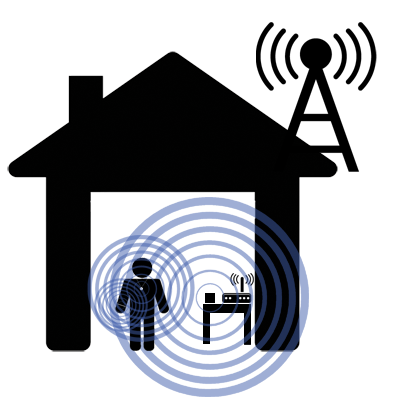This article focuses on the subject of 5G radiation, which is a non-ionizing type of electromagnetic radiation. Because 5G radiation is so small, it does not possess the capability of breaking the bonds between chemical molecules in biological tissues or trigger any changes to cells. It's not clear whether 5G radiation can affect the risk of skin cancer, and there is no evidence that has been found to suggest that it could cause other disease.

High-frequency millimeter wave radiation
High-frequency millimeter wave radiation from mobile devices and wireless networks could cause adverse health effects for humans. There are several ways in which this radiation could cause harm. In certain instances, the radiation can cause damage to the person's DNA. In 5g radiation poisoning may cause harm to other areas within the body including the brain.
Recent research has shown that 5G technology can induce tissue heating. As a result, researchers from the International Council on Non-Ionizing Radiation Protection (ICNIRP) has called for a review of the existing standards for biological and thermal safety. The current exposure standards don't protect people from extreme heat when exposed to pulsed millimeter wave radiation.
Skin cancer risk
There is no definitive answer to the question of whether the 5G radiation could cause skin cancer. However, it is believed that 5G RF-EMFs behave like high-LET ionizing radiations. As 5g towers radiation , they can cause large amounts of free radicals in the skin. The FCC hasn't issued any specific guidelines on the risks of 5G technology. The debate continues.
Although there are a number of studies regarding the impact of higher-frequency radio waves on human health, these studies have remained largely limited in their scope. However, there is concern over the effects of millimeter-wavelength exposure on oxidative stress and gene expression. These effects could be extended to the skin and various organs, like the brain.
Influence on other illnesses

An innovative new technology in wireless called 5G is rapidly expanding, but scientists are warning about the health risks that could be associated with it. 5G will dramatically increase the quantity of electromagnetic radiation that is found in our environment. This is a concern that has sparked debates in many nations, including Switzerland. In Visit this link , 390 scientists and doctors were in favor of the suspension of 5G technology. This call was ignored by the European Commission, which is in charge of controlling the use of 5G technology.
Therefore there is a need for more research to study the health implications of 5G. However studies have proven that 5G doesn't cause the same negative effects on humans as radiation from older mobile networks. It also does not spread a new type of coronavirus. In addition, it does not make people more vulnerable to viral infections.
Measurement of exposure
Monitoring exposure to radiation from 5G is an important aspect in making sure that 5G networks are safe. There are two methods to measure exposure. 5g towers radiation is to measure the RF power absorbed by human tissue. Another is measuring the quantity of radiofrequency energy released from an object. Radiofrequency energy (RF) can be described as an energy source that is emitted through radio transmitters.
Within the United States, the FCC has imposed a restriction on the energy density of mobile devices running 5G. These tests can only test the power density of the distance of several inches, and it is the FCC does not have to measure each beam. However it is possible to determine the energy density for each beam can be estimated by computer simulation. The most extreme scenario is then determined depending on the beam's configuration. each beam.
Limitations of the study
There's been a lot of discussion about whether 5G radiation will affect the health of humans. In the case of 5G, for instance. Swiss authorities, for instance has issued an analysis that concludes the technology has no negative health consequences in the short term but there aren't any studies that show long-term impacts. However, this report also contains a number of problems that include biased reportage.
The frequency and power of the radio waves that transmit energy depend on the frequency. The energy that is carried by a millimetre wave will be identical to that of current radio waves however, they're less visible and are ideal for high-density settings because they cannot be blocked by glass or walls. Highly dense urban areas will require many small, low-power sites, and suburban areas will benefit from 5G stations operating at lower frequencies.
